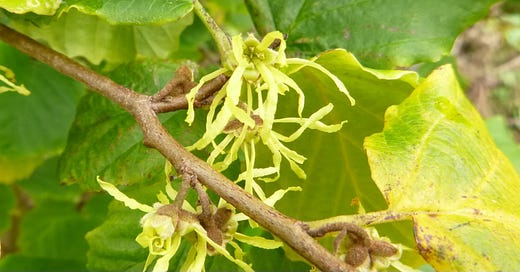MAKING RECIPES #6 Growing and distilling witch hazel sustainably
How we can benefit from this wonderful shrub and help to reduce pressure on wild populations
We planted witch hazel in our medicinal woodland project in Devon, UK, back in 2005, and within 4-5 years we were harvesting leafy twigs every spring for distillation. The distillate of leafy twigs is a lovely aromatic water which is powerfully anti-inflammatory. In this post I explain more about the effects of witch hazel and ways that it can be used and sustainably cultivated.
In commercial use, extracts of American or Virginian witch hazel (Hamamelis virginiana) provide astringent and anti-inflammatory effects with multiple uses for skin complaints. Wild-harvested supplies of this amazing plant are traded worldwide as preparations used in cosmetics, eye drops, skin creams, toners. It can be helpful in many skin problems from insect bites to eczema and sunburn.
Which species of witch hazel?
The native home of Hamamelis virginiana is in eastern USA but the witch hazel may be increasingly threatened by loss of habitat and overharvesting. The Virginian witch hazel is a hardy North American species. It is a small tree or large shrub up to 5 m with arching branches which often is multi-stemmed and spreading in habit. This shrub carries straplike yellow petalled flowers and then seed capsules which stay on the tree until the following year.


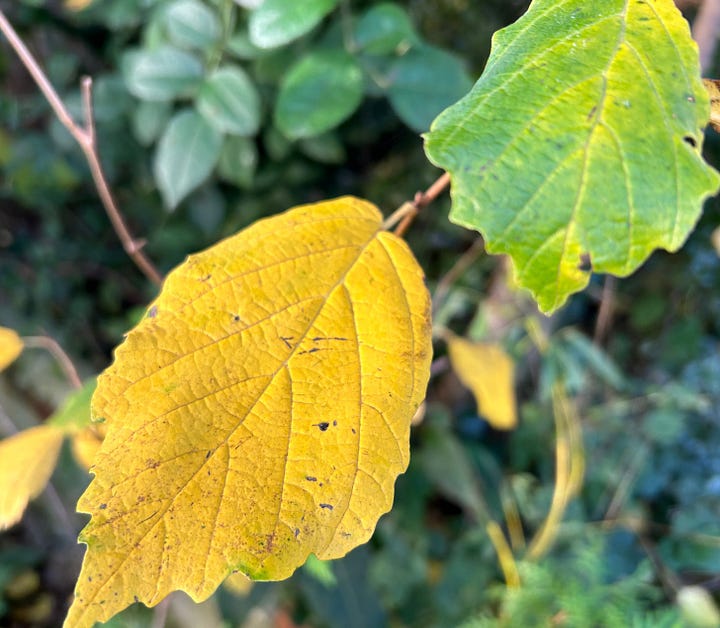

The fragrant flowers of Virginian witch hazel are produced in autumn unlike the other American witch hazels (H. vernalis, H. ovalis) or Asian witch hazels (H. mollis and H. japonica) which flower in early spring. All of the species are highly ornamental, providing both flowers and autumn colour. Once the Hamamelis seed capsules are fully ripened on the branches in the following year they dry out and explode, scattering their shiny black seeds - this bursting open is known as dehiscence and the advantage to the tree is a wider spread of the seeds!

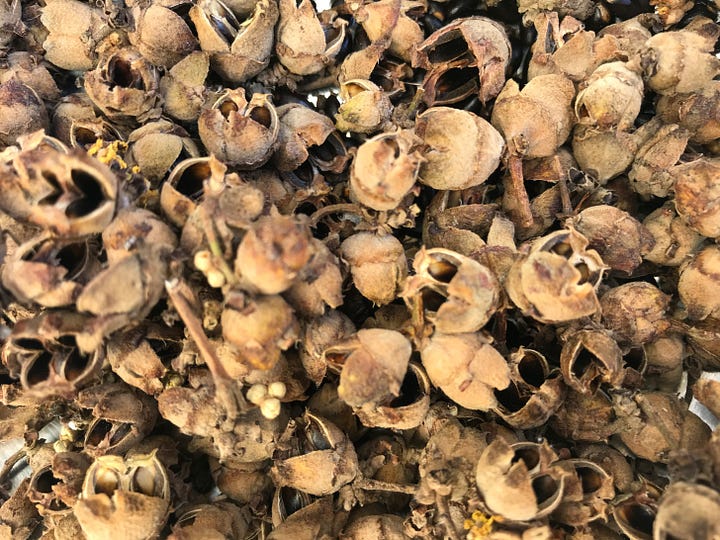
Historical uses
There has been little recognition of the knowledge and many uses of witch hazel made by indigenous peoples of northern America. Noticed by early settlers, the exploitation of witch hazel soon became a commercial venture, for example the distillate used to be known as an ingredient in cold cream with a secret formula. Over the centuries, various entrepreneurs have attempted to trademark and control the recipes for preparations and to make money out of witch hazel products.
Sustainability
In commerce today the distilled witch hazel water is preserved by alcohol (14%) or other preservatives such as benzoic acid. However, the Virginian witch hazel is heavily harvested by dragging whole shrubs out of the woods to be pulped and steam distilled. Now some of the wild-harvested sources of this species are becoming scarce. One way to avoid pressure on wild populations is to buy organically accredited witch hazel which usually indicates that the producer has a care for quality and sustainability (though not guaranteed). Alternatively, if you have a garden or growing site with slightly acid soil you could grow and process your own!
Making a witch hazel infusion
It is not essential to distil witch hazel for an anti-inflammatory effect, the leaves can be dried and used to make an infusion. Pour 150 ml of boiling water onto 5 g of dried witch hazel leaves and strain after 10 min. Allow to cool. This infusion lasts 1-2 days in a cool place and can be used externally for compresses to ease acne, bruises, skin irritations, sunburn, insect bites, haemorrhoids, varicose veins.
Distillation produces an even more effective extract for external use. Small quantities of plant materials can be distilled using an upturned lid over a saucepan, as outlined in this recipe for making a hydrosol.
Recipe for witch hazel hydrosol
You will need:
200 g of fresh witch hazel leafy twigs
1500 ml cold water
Ice cubes
A large 3-litre pan, lid, small glass bowl
Spray bottle for storage
1. Chop the leafy twigs into 1-2 cm pieces.
2. Place the empty bowl in the centre of the pan with the chopped material around in the pan (not the bowl).
3. Add water in the pan (not the bowl). Ensure that the level of liquid does not come too close to the lip of the bowl. Heat until boiling, then set to gently simmer.
4. Place the pan lid upside down over the pan so that steam can collect on its lower surface and cool and condense to drip into the empty bowl below. Place some ice cubes in the top of the upturned lid to increase the cooling effect.
5. Continue collecting the drips into the bowl as long as the steam has some aroma, or until the material appears spent.
6. Turn off the heat, pour the liquid from the bowl into a spray bottle and label, discard the spent leafy material and water to compost. This hydrosol in a spray bottle can keep for 1-2 months. It needs a preservative such as a few drops of essential oil or added alcohol (about 15%) for longer keeping.
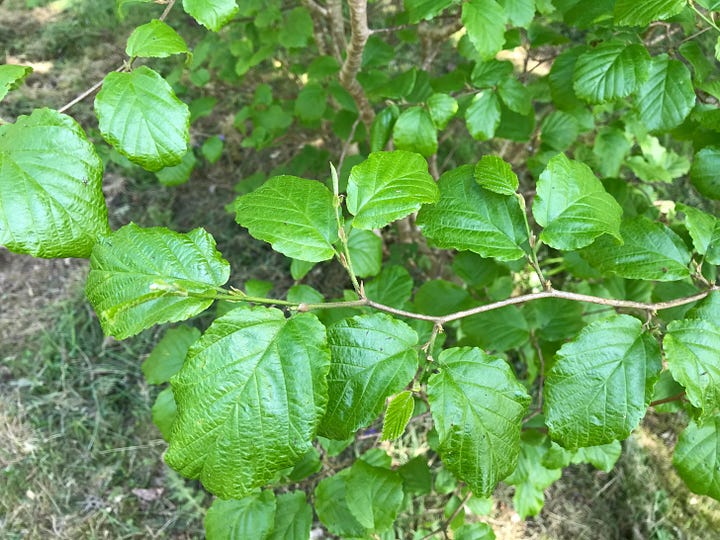
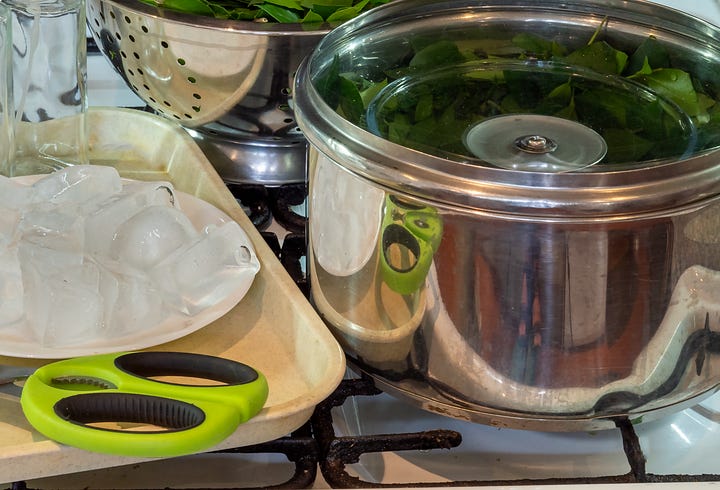
Both the bark and the leaves of witch hazel have a place in herbal medicine. There are several recognised pharmacopeia preparations based on distilled extracts of witch hazel - the bark or the young leafy twigs. In commerce the bark is most likely to be used, and steam distillation may be carried out over several days.
MAKING RECIPES # series
The MAKING RECIPES # series of posts are available in full to paid subscribers. This series of posts, MAKING RECIPES #, gives my inside story on growing, harvesting, making, preserving, selling healing remedies and body care products from the medicinal forest garden. Over the years I have gained a fair amount of experience and insights in ways to grow and harvest plants including trees and shrubs. By writing these posts I aim to build up material towards another book publication. As a paid subscriber you can receive all of this written material prepublication! You can access these posts and the full archive with a paid subscription, and also join the community talking about these posts.
Growing our own witch hazel shrubs at Holt Wood
We planted young seedlings of Virginian witch hazel at Holt Wood, our medicinal tree project in North Devon, UK, back in 2005.
Keep reading with a 7-day free trial
Subscribe to Medicinal Tree Woman to keep reading this post and get 7 days of free access to the full post archives.


